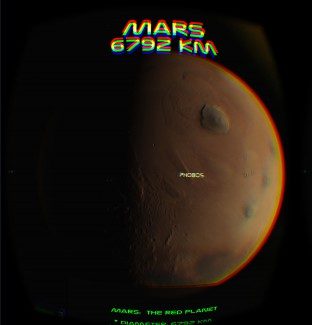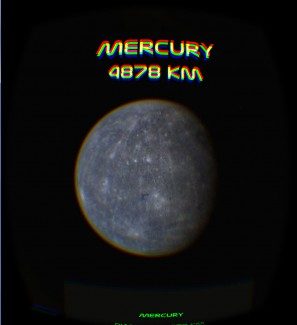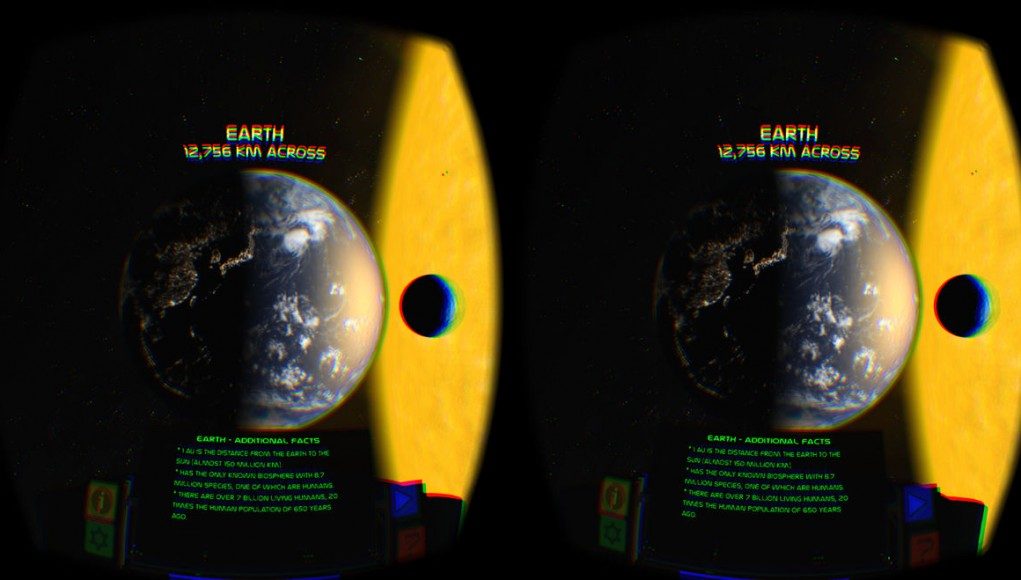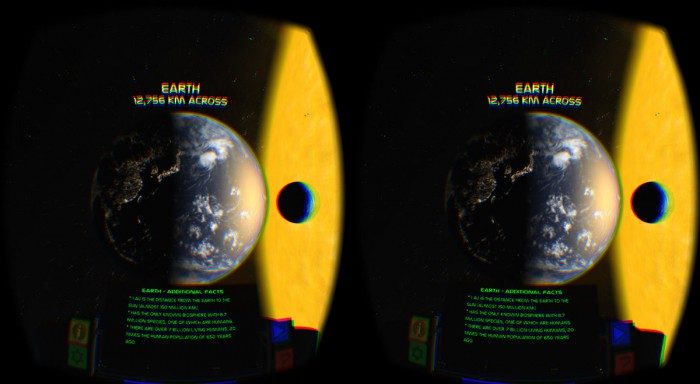Titans of Space is one of the classic Oculus Rift DK1 experiences. It takes users on a tour through the solar system, with a particularly amazing star size comparison at the end which is unlike anything you’ve ever seen in an astronomy book. It was also one of the first Rift experiences to support positional tracking, thanks to a clever use of the Razer Hydra controller. Now, this go-to Rift experience has been updated for the DK2.
 Titans of Space is one of the best early examples of what VR can do for education. It’s one thing to read in a book about how big the planets are—it’s another entirely to experience it for yourself. The latter is something much more impactful.
Titans of Space is one of the best early examples of what VR can do for education. It’s one thing to read in a book about how big the planets are—it’s another entirely to experience it for yourself. The latter is something much more impactful.
Titans of Space zooms users around the solar system to all the planets, and presents interesting facts about each. Graphical data from the likes of NASA and the ESA adorns planets and moons with accurate and beautiful surface features. Mars is one of my favorite planets to zoom in on (space bar) to look at the mountains and craters up close. Here’s what I thought about the title on the DK1 when I tried it more than a year ago:
I just got back from a trek that I didn’t expect to be able to take in the year 2013. I visited every planet in the solar system, and then some. Titans of Space provides a sense of scale that instills wonder.
If there was ever any question that virtual reality could be used for education, this is the answer. In Titans of Space, I zoomed around the solar system, learning about every planet and their moons along the way. While a textbook could have told me the same facts, the impression of the experience won’t soon let me forget them.
The game has now received a major overhaul which brings it up to date with the latest Oculus SDK 0.4.1 beta and also adds support for the Oculus Rift DK2. The Titans of Space site notes that the game has received a “complete overhaul of underlying program. Almost all of the original features have been re-implemented…” The options menu now features an extensive list of toggles, making this not only a great VR experience, but also a great testbed to seeing how the DK2 performs with things such as low-persistence turned off vs. on.
The current release of the experience, v1.52, is now available for Windows. Mac support is on the way (along with Linux, once the Oculus SDK supports it).
Titans of Space was one of the first Rift games to support positional tracking on the DK1. By combining the DK1 with the Razer Hydra VR controller, players could lean over the edges of their touring craft to peer at the infinite cosmic depths below them. It was an extremely cool experience, but a bit of a hack—I used to have users wear a dress shirt so I could put the Hydra controller in the breast pocket—it was a pain, but when it worked, it was worth it.
 Now with accurate native positional tracking from the Oculus Rift DK2, everyone can easily get their hands on that excellent experience without the need for the Razer Hydra and the imprecise calibration needed to get the HMD and positional sensor working together.
Now with accurate native positional tracking from the Oculus Rift DK2, everyone can easily get their hands on that excellent experience without the need for the Razer Hydra and the imprecise calibration needed to get the HMD and positional sensor working together.
The DK2’s increased resolution really makes Titans of Space shine, especially when looking up close at the terrain of planets. Many of the planets are now using enhanced textures to take advantage of the higher resolution. The stars in the background also resolve significantly better, and look much closer to points of light than pixels (as they did on the DK1). Thanks to the OLED display, the blacks of space really look black (rather than grey with the DK1).
The grand finale of Titans of Space is the star size comparison at the end. As a fan of astronomy, I’ve seen many such comparisons in books (as text and pictures), online, and in videos. But none of that compares to seeing how massive stars can be when you are floating right next to them. If you run through Titans of Space and don’t feel a pang of humility about your place in the universe when confronted with the scale of these cosmic bodied—I don’t think anything could make you.








